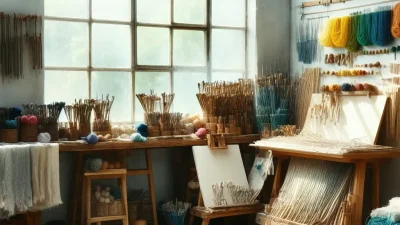Create Your Own Mini Ecosystem: A Comprehensive Guide to DIY Terrariums
Have you ever wanted to bring a piece of nature into your home? Look no further than the fascinating world of DIY terrariums. These self-contained ecosystems are not only beautiful but also a great way to connect with nature, even if you’re short on space. Whether you’re a seasoned gardener or just starting out, this guide will walk you through everything you need to know to create your own stunning terrarium.
Why Choose DIY Terrariums?
Creating a DIY terrarium is more than just a hobby; it’s a way to bring life into your living space. These miniature gardens are low-maintenance and can thrive in various settings, making them perfect for apartments, offices, or even as unique gifts. Plus, they’re a fantastic way to experiment with different plants and designs without the commitment of a full-sized garden.
Here are some reasons why DIY terrariums are worth your time:
- Low Maintenance: Terrariums require minimal care, making them ideal for busy individuals or those new to gardening.
- Versatile Design: You can customize your terrarium to fit any style, from modern and sleek to whimsical and rustic.
- Therapeutic Benefits: Building and caring for a terrarium can be a calming and meditative activity.
- Educational: They provide an opportunity to learn about plant care, ecosystems, and horticulture.
Types of DIY Terrariums
Before diving into your project, it’s essential to decide what type of terrarium you want to create. Here are some popular options:
Closed Terrariums
Closed terrariums are completely enclosed and rely on their own internal environment to sustain plant life. They’re perfect for plants that thrive in high humidity, such as ferns, mosses, and certain tropical varieties. These types of terrariums require less maintenance but need careful attention to airflow and lighting.
Open Terrariums
Open terrariums are ideal for plants that prefer drier conditions, like succulents and cacti. These setups allow for better air circulation and prevent overhydration, which can be a common issue with closed systems.
Gathering Materials
To create your own DIY terrarium, you’ll need a few key materials:
- A clear container (glass or plastic)
- Pebbles or gravel for drainage
- Activated charcoal to prevent mold and mildew
- Layered soil (e.g., potting soil, sand)
- Plants of your choice
- Decorative elements (optional)
You can find these supplies at most garden centers or online retailers. Don’t forget to choose plants that are compatible with each other in terms of light, water, and temperature requirements.
Step-by-Step Guide: Creating Your DIY Terrarium
Now that you have your materials ready, let’s get started on building your terrarium:
- Prepare the Container: Clean your container thoroughly to ensure there are no dirt or residues. If it’s a closed system, make sure it has proper ventilation.
- Add Drainage: Place a layer of pebbles or gravel at the bottom to promote drainage and prevent root rot.
- Add Charcoal: Sprinkle a thin layer of activated charcoal on top of the pebbles to help with odor control and moisture management.
- Add Soil: Pour in your soil, making sure to leave enough space for your plants. For open terrariums, use sand or cactus mix; for closed ones, opt for regular potting soil.
- Plant Your Greens: Gently remove plants from their containers and place them into the soil. Arrange them in a way that complements their growth patterns and aesthetics.
- Add Decorations: Personalize your terrarium with decorative elements like miniature figurines, colored stones, or driftwood.
- Water Gently: Depending on the type of plants you’ve chosen, lightly mist or water them. Be careful not to overwater, especially in closed systems.
Maintenance Tips for Your Terrarium
To keep your terrarium healthy and vibrant, follow these tips:
- Lighting: Place your terrarium in an area with indirect sunlight. Avoid direct sunlight to prevent overheating.
- Watering: Only water when necessary. Closed systems typically need less frequent watering than open ones.
- Pruning: Trim back any overgrown plants to maintain balance and encourage new growth.
- Cleaning: Periodically remove debris or dead plant material to keep your terrarium looking its best.
Creative DIY Terrarium Ideas
Once you’ve mastered the basics, there’s no limit to what you can create with a DIY terrarium. Here are some fun ideas:
- Nature-Inspired Themes: Create a forest scene with ferns and moss or a desert landscape with cacti and sand.
- Seasonal Decorations: Update your terrarium with seasonal plants, like poinsettias for winter or tulips for spring.
- Themed Displays: Design around a specific theme, such as a zen garden or an underwater scene using blue tones and sea creatures.
Conclusion
Crafting your own DIY terrarium is a rewarding project that combines creativity with the joy of gardening. Not only do these little ecosystems add beauty to your space, but they also provide an opportunity for personal growth and learning. Whether you’re creating a simple open terrarium or a complex closed system, remember to enjoy the process and let your imagination guide you.
So why wait? Gather your materials, choose your plants, and start building your very own piece of nature today!





